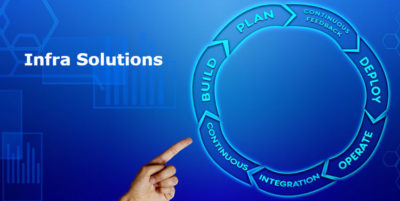Over the course of last five years, the Chief Executives of various enterprises have seen a rapid shift in their responsibility they not only act as a strategy participant, but they also have become a strategy enabler, a deep influencer if not a strategy shaper. Driven by the need for developing new innovation for solving current IT issues now have become a product or Service for Infrastructure solution. Many of the current C-level executives added that the need of handling a multi-role responsibility had become the primary reason for their increased demand in the industry, CIOs are playing a central role in creating revenue initiatives and including new products and services.
Nearly two-thirds of CIOs say that driving revenue through the creation of new products and services is among their responsibilities today. The need of enterprises to become more revenue driven by learning about customer needs, around 55 percent of CIOs felt it as important, creating teams focused on innovation was agreed by 47 percent, while the creation of business care scenarios with defined costs and benefits almost 40 percent of the CIOs have agreed to that. CIOs need to co-work with many of the lower level organizational employees to build a complete infrastructure solution that solves the current problem. IT teams today have moved from satisfying the simple needs of performing certain business operation today they assist the business actually to generate revenue.
IT admins are now an imperative part when a certain new product or service needs to be launched making them a required wheel in the complete cycle of initiation. Even many of the networking products or services deployed in-house are becoming a package product/ service for the enterprises. For enterprises that have just started the journey of revenue generation following are the seven steps to assist the shift in revenue driven IT.
1. Building a business sharing model with other leaders
To drive revenue, we must first have the business operation of the company in order. When you provide a service or product to a third party user, the requirements vary greatly. If you have a product that connects the devices or an app suddenly stops functioning during a certain function it creates a sense of lull in the company. Having a conversational meeting with your product builders or service providers, a CIO could bring in new insights into the conversation. The leaders of the enterprises should be made aware of the capabilities and strength that can assist in delivering additional value for the clients.
2. The need for involved IT teams
Having the technology and IT teams on the table during the Strategy development of enterprises is a very basic step towards developing the specific growth strategies and initiatives to drive the revenue. This allows all the enterprise’s leaders to actually view the objective and potential use cases that could be enabled through the technology to drive growth. Having an Infrastructure solution backed by the IT team will improve the overall strategy implementation. Without any integration between the sales, marketing and operations the growth will fall short, such type of selling strategy could lead to disaster. The IT team at Alvarez and Marsal develops and manages technology for 19 specialized practices, the need for understanding the customer requirements along with providing a solution for business challenges.
3. Focus on customer
In a recent survey, we found that 55 percent of the CIOs are currently learning about customer needs in order to deliver products and services. Every new innovation decision must pass through the threshold of use cases that can deliver the right amount of revenue required to be invested or whether we need to have another strategy towards the development. The need to add data from test cases along with feedbacks will give us a complete view of our lack of development features and where the revenue generating elements will actually come from.
4. Building a strong vendor relationships
One of the reasons why certain enterprises are early movers in the sector compared to other enterprises is that they value the vendor relationship with their customers. The value of relationships is more than just a customer and seller giving them an external knowledge about various opportunities and requirements. Enterprises share their business requirements with those vendors having strong relation and team.
5. Technology as an investment
In the early day of technology development, IT teams were considered a burden on the revenue. IT teams used to fight for more funds constantly. Things now have changed drastically; we have changed the IT from an expense to an investment option. Technology impacts the operational requirements when we say we want to become technological more dynamic to face challenges that would need infrastructure and solutions.
6. Improve the Performance
Applying the new applications to existing technologies to deliver solutions for its customers, will require many trails and resulting in the development of many errors. Having different use cases in hand will require a large scale understanding of the product/ services along with the preference of success for generating the revenue. Infrastructure solutions today need to be driven by the need of outperforming it other competitors, so performance is a factual need that needs to be addressed.
7. Building and mentoring new talent
To drive revenue, you need to focus on the supporting and mentoring the given pool of talent that can drive the change within the organizations. In today’s demanding market, where performance is considered as prime certain many of the enterprises, are poaching the high performing talent giving them lucrative opportunities. Digital Driven Solutions need a constant flow as need talent with ideas, and the situation might differ if you don’t invest.
Conclusion
Digital Driven solutions form the prime face of today’s requirement for an IT infrastructure solution. Enterprises spend a significant amount of time on developing a solution that solves the requirements but provides a significant capability for infrastructure. IT teams form the basis of such requirements and the need to having an able team that will assist in defining connection upfront and strategy to derive solutions.
To know more, you can download our latest whitepapers on Infra Solutions.












